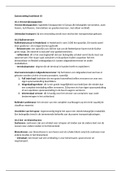Summary
Public sector economics - Summary - Tilburg university - Economics
- Course
- Institution
Instagram: ECOsummaries DM me for 20% discount! Summary for the course ''Public sector economics''. This summary was written in order to study for the final. Everything you need to know is available in this summary, including all the mandatory papers! Advice: this summary alone will not be enoug...
[Show more]










